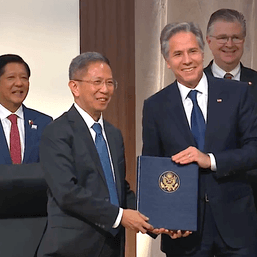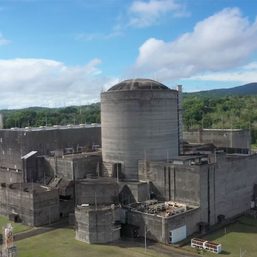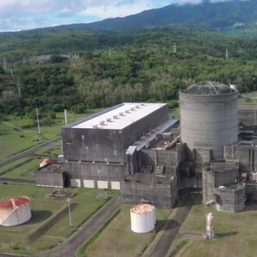SUMMARY
This is AI generated summarization, which may have errors. For context, always refer to the full article.
![[OPINION] Nuclear energy should not become major part of Philippine energy system](https://www.rappler.com/tachyon/2023/01/nuclear-energy-january-26-2023.jpg)
Nuclear energy has emerged as one of the most controversial issues on energy security and national development in the Philippines. The most recent presidents, Rodrigo Duterte and Ferdinand Marcos Jr., have openly supported for nuclear to have a much larger presence in the country’s energy mix.
At the moment, the nation is still in the stage of considering options for sites, technologies, and proposals for installing facilities. However, the Philippines has a chance to change its course and avoid making the same mistake again.
Nuclear energy should not become a major part of the future Philippine energy system. Here are more reasons why.
Not a climate solution
Proponents would highlight nuclear energy as a potential solution to address the climate crisis. However, as a mitigation option, solar and wind energy not only have much higher potential for reducing GHG emissions, but also are more cost-effective than nuclear energy.
The Intergovernmental Panel on Climate Change, in its most recent report, showed that mitigation options costing at most $100 per ton of CO2-eq can reduce global GHG emissions by at least 50% by 2030. The options with the highest potential for reducing emissions are solar and wind energy, with more than three times the potential of nuclear. Promoting energy efficiency is also reported to be more effective in reducing emissions than nuclear.
Renewable energy (RE) and energy efficiency are key components of the country’s plans to reduce its pollution. As a signatory to the Paris Agreement, the Philippines voluntarily pledged to reduce its GHG emissions by 75% within the current decade. If nuclear energy development proceeds, it would take up to 15 years for nuclear plants to be built, which would include the year 2030. This is the deadline for several global targets, including the Paris Agreement and the UN Sustainable Development Goals.
While the current leadership has placed an emphasis on RE, gas (a fossil fuel), and nuclear power as its primary options to move away from coal, this policy direction lacks internal consistency in terms of the need to urgently address the climate crisis. As of now, the Philippines still lacks a comprehensive, detailed, long-term strategy for reducing its GHG emissions, despite having been a part of the Paris Agreement for seven years.
Nuclear energy is likely to hinder the Philippines’s climate action strategies. It is therefore vital for the government to instead prioritize RE development and promoting energy efficiency towards the transformation of the Filipino nation.
A distraction against RE
The power generation of coal plants, currently the main source for “baseload” power generation in the country, remains constant to minimize operational costs. However, this makes energy systems inflexible in responding to drastic changes in demand. This was observed during the height of the COVID-19 lockdowns, coinciding when some coal plants had to be shut down for maintenance, resulting in several cases of “yellow alerts” and “red alerts” seen in different parts of the country.
Moving forward, Philippine energy policymakers must prioritize a more flexible energy grid over emphasizing “baseload” generation. For decades, large-scale fossil fuel projects with long-term contracts have been favored as an attempt towards an energy system that minimizes costs. However, as the country heavily imports fossil fuels, this instead has resulted in an inflexible grid, volatile power prices, and an energy system more vulnerable to shocks brought by crises.
Similarly, the Philippines has no known source of minerals that produce nuclear energy, like uranium or plutonium. This would leave the country in the same position it was in when it came to its reliance on coal. Coupled with a proposed gas expansion (another fossil fuel) and the current energy policy framework, replacing coal with two imported fuels to share the “baseload” generation would result in even higher electricity prices and a greater burden on Filipinos.
The same argument has been brought up that the nation is not yet ready for RE to be the dominant energy source. However, what these stakeholders have failed to highlight is that the poor implementation of RE Act (Republic Act 9513) has contributed to slow RE growth domestically. Despite being a decade-plus-old law, the share of RE in the energy mix has actually decreased from 33.9% in 2008 to 22.4% as of 2021.
Several studies have shown that RE has to comprise the majority of energy generation to achieve climate and development-related goals. A report by the Department of Energy itself showed that it is possible to attain a share of 50% for RE in the Luzon-Visayas grid by 2030. Achieving this involves enhancing system flexibility and coordination planning for improving generation and transmission.
In a separate study, the International Energy Agency has projected that to achieve the goals of the Paris Agreement in responding to the climate crisis, RE has to make up more than 60% of the total energy supply in Southeast Asia by 2050. In this scenario, nuclear energy only has a very small percentage of the regional energy supply.
It is clear: Not nuclear
Nuclear energy is not about recreating a legacy. It should not be about being selectively captivated by foreign trends or maintaining some status quo. It is a key issue that has tremendous implications on national sustainable development, from addressing the climate crisis to the well-being of Filipino consumers, and requires a comprehensive, inclusive policymaking process.
Evidence clearly shows that nuclear energy poses many safety and security risks throughout its life cycle, would be too costly for Filipino consumers, and distract the country from implementing its climate actions, especially on RE.
Instead, the Philippines must focus on becoming more self-sufficient in its energy generation by moving away from imported fuels, including coal, gas, and minerals responsible for nuclear power, and prioritizing the development of an adaptable energy system powered by indigenous sources, especially RE. – Rappler.com
John Leo Algo is the Deputy Executive Director for Programs and Campaigns of Living Laudato Si’ Philippines. He is a member of the Youth Advisory Group for Environmental and Climate Justice under the UNDP in Asia and the Pacific.
1 comment
How does this make you feel?
![[OPINION] Alternative energy for a climate-challenged Philippines](https://www.rappler.com/tachyon/2022/09/Screen-Shot-2022-09-26-at-1.12.37-PM.png?fit=449%2C388)

![[OPINION] Who decides whether Bataan should go nuclear?](https://www.rappler.com/tachyon/2023/08/imho-bataan-nuclear-powerplant.jpg?resize=257%2C257&crop=271px%2C0px%2C720px%2C720px)


Thank you for this clear stance and the links to the Department of Energy’s reports. Reading this in Switzerland, where nuclear power is to be abandoned (like in Germany), this perspective makes a lot of sense. While there are campaigns to reconsider nuclear power and invest in new nuclear power plants, these plans don’t evoke any enthusiasm on the side of economic actors. The big energy companies say nuclear power isn’t viable economically. It is only in strong centralized states (France, China, GB) where nuclear power has a future because there is direct or covert state (including military) investment in these technologies and power plants. Two questions are first on my mind when I think of the Philippines and the current decisions to be taken: What would be the concept of nuclear waste storage accross millennia in the Philippines with its heavily shaky underground? And second: Iceland with its volcanoes on a shaky underground has turned this geological situation into a source of renewable energy – using the heat of the underground, the hot springs, etc. I remember geothermic installations in Los Baños. Is this still part of (alternative) strategies?